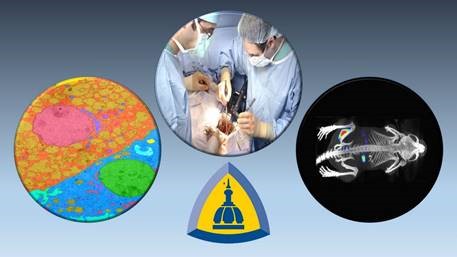University of Virginia School of Medicine researchers have discovered how the cells that let us hear can repair themselves after being damaged. That important insight could benefit efforts to develop new and better ways to treat and prevent hearing loss.
Tag: Hair Cells
Hairs that help fish feel–and humans hear
Brian McDermott, a Case Western Reserve scientist, is reporting a discovery about unexpected asymmetry on the hair cells of zebrafish that allow them to detect movement with greater sensitivity from the back than the front. “This shows that fish have hair cells that are actually tuned to sense different water directions,” McDermott said. “In humans, our cochleas have hair cells that are similarly tuned to be able to hear different frequencies.” McDermott said the finding also advances our understanding of “the long-sought mechanotransduction (Mec) channel” in living creatures.

Research News Tip Sheet: Story Ideas From Johns Hopkins Medicine
During the COVID-19 pandemic, Johns Hopkins Medicine Media Relations is focused on disseminating current, accurate and useful information to the public via the media. As part of that effort, we are distributing our “COVID-19 Tip Sheet: Story Ideas from Johns Hopkins” every other Tuesday.

Study uncovers hair cell loss as underlying cause of age-related hearing loss
In a new study of human ear tissues, hearing scientists have demonstrated that age-related hearing loss, also called presbycusis, is mainly caused by damage to hair cells, the sensory cells in the inner ear that transform sound-induced vibrations into the electrical signals that are relayed to the brain by the auditory nerve. Their research challenges the prevailing view of the last 60 years that age-related hearing loss is mainly driven by damage to the stria vascularis, the cellular “battery” that powers the hair cell’s mechanical-to-electrical signal conversion.
Reprogramming the Inner Ear to Regrow Hair Cells Shows Promise to be an Effective Target for Hearing Loss Treatments
Mass. Eye and Ear scientists report the identification of a new pathway linked to cell division in the ear. With this pathway, they were able to reprogram the inner ear’s cells to proliferate and regenerate hair cell-like cells in adult mouse models.